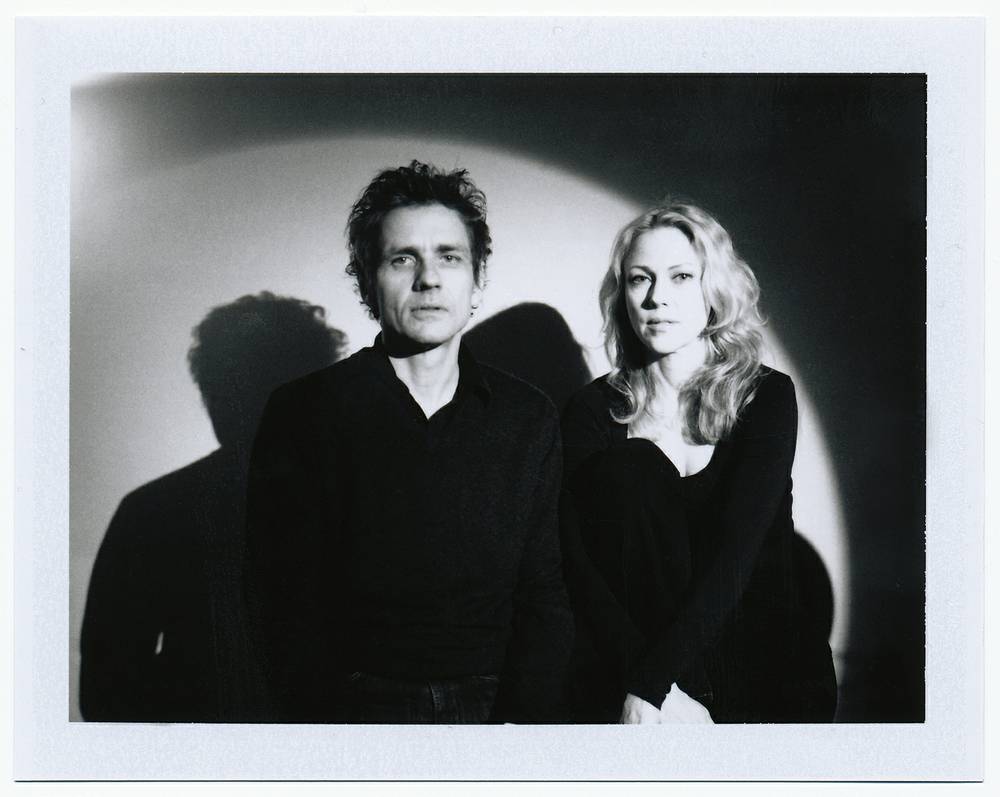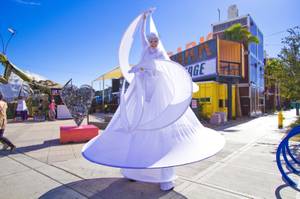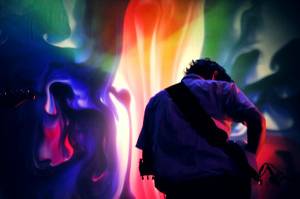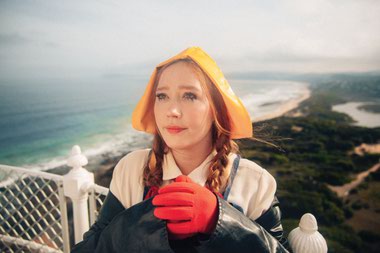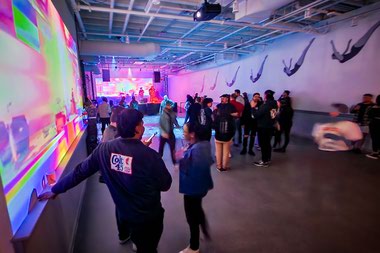More Life Is Beautiful
Have you played Las Vegas before? I’ve never played in Vegas. I’ve only been to the airport, but even the airport was exciting. Just flying in, looking out the window, you feel the pull of it, like it’s some evil force pulling you in, like Mordor.
So you live in LA and haven’t been to Vegas? I’ve only been here for six months—I moved here in April—so that’s my excuse. And in all my years of touring, no one’s ever suggested that we play there. Luna was on a tour with the Cocteau Twins when they had that album Heaven or Las Vegas, and I think they ended the tour in Vegas but we were off the tour by then. Or maybe that was Galaxie 500 … I think it was. It was the last Galaxie 500 tour.
How many times have you performed this “13 Most Beautiful: Songs for Andy Warhol’s Screen Tests” show? We’ve done this show about 80 times. We haven’t done it for a while, for four or five months, but for a while we were doing it all the time. We went all over the world. It took us into all kinds of incredible spaces that I don’t think we would ever play in, like Sydney Opera House or a 15th-century church in Paris, the Metropolitan Museum, a lot of museums.
Here, you’re playing inside a rock club, the Fremont Country Club, as part of a festival called Life Is Beautiful. It’s the first year for the festival, right? Usually, when we do the show, the movie screen is above our heads. I don’t know if the stage is high enough to put it above our heads, so we might be standing on either side of the screen or something. But maybe that will be better, ’cause some people have said to me that the only problem with it being above our heads is that they look up at the screen and then they look down at the stage and back and forth, and you can’t focus your eyes, you’re not sure what to look at. So maybe this’ll be better.
Has the show been part of festivals before, or is it usually the main attraction? It’s usually the main attraction. We’ve done some arts [fests] in Europe, and we did it at WOMADelaide, a world music festival in Adelaide, Australia, in an outdoor situation where we had, like, 30 minutes to get it up onstage. Usually we have all day, but it worked.
The names “Dean & Britta” aren’t specifically attached to the set on the Life Is Beautiful schedule. Is that by design, so that the screen tests get top billing? No, I think they just forgot to put our name on it (laughs). I feel like this is not part of the rock festival, and I’m not sure it’s quite in the arts section, either. It’s something in between. Or maybe the name was too long—"Dean & Britta, 13 Most Beautiful: Songs for Andy Warhol’s Screen Tests" was too much to fit in there.
I wonder how many people even know you’re coming to perform. We’d better get out there and tweet it (laughs).
How long is the set? It’s 65 minutes long, 13 4-minute films, with a short break in between. It’s a multimedia show that works. I think often times when I hear those two words together, multimedia show—or is that three words?—it signifies, like, boring, but this, I think, really works. The films are beautiful, and I don’t think people ever get a chance to see them in the kind of situation where you pay attention to them, like really look at them, and on a big screen. Sometimes you’ll go to a gallery or something and they’ll be playing them on TV sets, but people don’t often get a chance to see these Warhol films on the big screen.
How many musicians are onstage altogether? Four. It’s mostly been the same four for a while. For about a year our drummer left, someone else came in, and it was radically different, to tell you the truth. Our drummer, Anthony [LaMarca], plays with a lot of restraint, and then we brought this other guy in who rocked a lot harder. But now Anthony’s back.
How did you end up on the Life Is Beautiful bill? I think the impetus came from the Bellagio; they have a Warhol show in their gallery. And they must have known people at the festival.
And in terms of the original concept, how did you come to score music for the Warhol Screen Tests? We were approached by the Warhol Museum. They’re sitting on all these films, 472 of them, a little-known part of what Warhol did. And I think they were trying to figure out a way to get them out there, have them be seen by more people. So I got a call from the curator for performance, who happens to be a fan of Luna and Galaxie 500. And they got some money from a festival in Pittsburgh, the Pittsburgh International Festival of Firsts, and together they came up with this commission.
I think maybe they expected we’d do it in Pittsburgh, where the first show was, and then maybe there’d be another six to 10 shows at some other festivals. I think we were all surprised that it went on and we wound up touring it for, like, three or four years and did that many shows. I think it’s because it works; people like the show.
So did they chose the 13 films? No, I went down to the museum in Pittsburgh and sat in a room and looked at some of the tapes they had there. That was a difficult first step, just figuring out which 13. Although when you look at some of them, some are immediately not as interesting, and some of them are fascinating. I picked out about 40 and took them home and sat with Britta and we started looking at them and playing music to them, just trying to figure out who we should pick. We read a lot about the Factory in that period and decided to pick people who were important in Warhol’s life rather than just some movie star.
I know you’ve got Lou Reed and Nico in there … Yeah, and we’ve got Dennis Hopper, who actually played an important role in Warhol’s life, just was a very early supporter of his, when he first came out to LA—one of the first people to buy something by him.
Was the music created specifically for this project? A couple of songs are covers. Like, for Nico we do this Bob Dylan song that he wrote for her called “I’ll Keep It With Mine,” that’s on her Chelsea Girl album. Nico and Dylan had met in Paris in 1965 before she was ever in The Velvet Underground and had an affair and traveled across Europe.
And then for Lou Reed, we were looking at Lou Reed and we were like, how can we possibly write a song for this. And then while we were thinking about it, this bootleg popped up on the Internet, a recording of a song called “I’m Not a Young Man Anymore” that nobody had ever heard. It was a Velvet Underground bootleg from 1966, which was the same year as Reed’s screen test. I can see why they never recorded it; it was just an idea for a song, in a way. So that seemed to work for him.
As you wrote the original music for the other films, did you put an emphasis on trying to have it sound like it was from that Factory era? I mean, that’s probably in my DNA anyway. Some of the songs certainly sound like they could have been recorded in that era, but there’s a few more electronic things that we have, too. Really, our struggle with this thing was just looking at each film and trying to figure out what is going on, what is the mood of this film. That’s your job when you’re scoring film, to try and write something that makes the film more interesting.
And in terms of the live performance, is the idea to try to be as minimal as possible and let the movies and the music be the stars? Well, we certainly can’t perform in bright light, because we’re showing a movie, so we’re kind of in dark lights. The music kind of supports the film, but I do think the two of them together make something that speaks to you in a different way than if you watch a silent film. If you’ve ever seen that little experiment where they show you scenes from Psycho, of Janet Lee driving with music and without music. The one is terrifying, and the other is just, like, whatever, nothing. The music that you put up against a picture can have a huge influence on the way that it’s perceived.
Have you had any of the people in the Screen Tests come to the shows? Yeah, the third show we did was in New York as part of Jazz at Lincoln Center, and Lou Reed was at that show, so that was nerve-racking. It was weird to be onstage with his face on the screen behind me and then looking at him sitting out there, too.
We met Lou. We met Mary Woronov, who was a whip dancer [for] The Velvet Underground and an actress who did a few Warhol films and then a lot of B movies over the years. She saw it in Los Angeles. Some of these other people are dead. Paul America is dead; we met his sister. Edie Sedgwick, obviously, is gone; we met her husband, Mike Post, when we did the show in Santa Barbara, and he was quite emotional.
What did Lou Reed have to say about the presentation? He said he loved it. And how clear it is what a genius Warhol is when you see these things. I mean, people can be bitter about Warhol. By and large, his paintings now are considered classics—although there’s still people who are bitter about that, too—but as a filmmaker some people are, like, “Oh, he’s not really a filmmaker.” But his brilliance, so often, is just being able to come up with an idea of something to paint or something to do that’s simple but yet hasn’t quite been done before. And I think these films, which are now, like, 45 years old, are still strange and unusual and challenging.
13 Most Beautiful: Songs for Andy Warhol’s Screen Tests featuring Dean & Britta Saturday, October 26, 7:45-8:50 p.m., Fremont Country Club.
